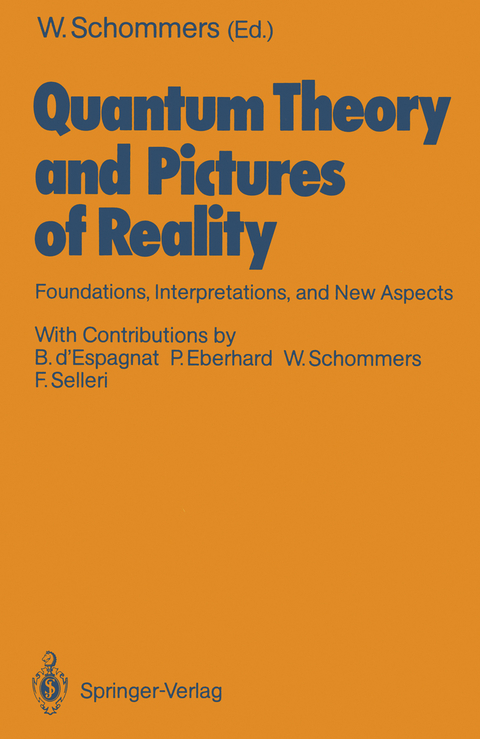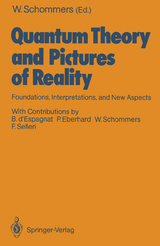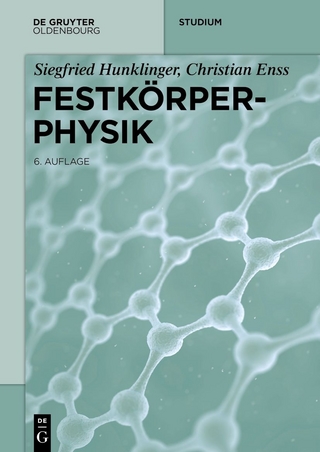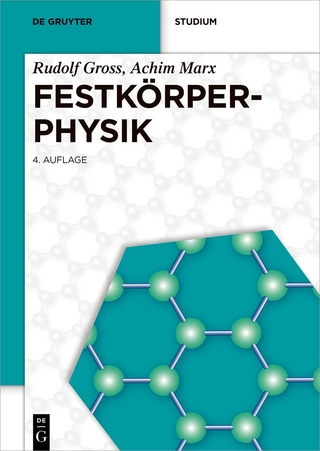Quantum Theory and Pictures of Reality
Springer Berlin (Verlag)
978-3-540-50152-7 (ISBN)
Although the mathematical formalism of quantum mechanics was established by Heisenberg und Schrödinger as early as 1925/26 and soon led to dramatic progress in atomic, molecular and solid-state physics, the interpretation of the theory remains to this day by far the most controversial problem in the foundations of physics. This book deals with the more philosophical question of how the formalism of quantum theory should be interpreted. The book has two parts. Part 1 is concerned with the usual view of quantum theory. Schommers introduces the foundations, mostly from a historical point of view. Eberhard gives an introductory account of the Einstein-Podolsky-Rosen paradox and Bell's celebrated inequalities. D'Espagnat discusses realism and separability and concludes that contemporary physics does not lead to a definite conception of the world. Part 2 deals with the new aspects of quantum theory.
Eberhard shows how a modell consistent with Bell's theorem can be constructed by admitting faster-than-light action at a distance. Schommers discusses the structure of space-time and argues that physically real processes do not take place in but are projected on space-time. Selleri discusses the idea that objectively real quantum waves exist and could in principle be detected.
1. Evolution of Quantum Theory.- 1.1 Classical Pictures of Reality.- 1.2 From Classical to Quantum Mechanics.- 1.3 Theories of Measurement: Brief Remarks.- 1.4 Summary.- Appendix 1.A. Classical Mechanics: Some Basic Remarks.- Appendix 1.B. The Relation Between Schrödinger's Equations and Classical Mechanics.- References.- 2. The EPR Paradox. Roots and Ramifications.- 2.1 A Debate Lasting More Than Fifty Years.- 2.2 A Far-Reaching Argument.- 2.3 A Sample of Possible Solutions.- References.- 3. Nonseparability and the Tentative Descriptions of Reality.- 3.1 Introduction.- 3.2 Realism and Separability.- 3.3 Separability and Quantum Physics.- 3.4 Disproof of the Principle of Separability.- 3.5 Counterfactuals and Influences-at-a-Distance.- 3.6 Some Problems Bearing on Causality.- 3.7 Tentative Descriptions of an "Independent Reality".- 3.8 Conclusion.- Appendix 3.I. Some Disproved Objections to the Bell Theorem.- Added Note.- Appendix 3.II.- References.- 4. A Realistic Model for Quantum Theory With a Locality Property.- 4.1 Introduction.- 4.2 Field Theory and Translation-Invariant Operators.- 4.3 The Model and its Predictions.- 4.4 Properties Related to Locality.- 4.5 Impact on Measurement Theory.- 4.6 Conclusion.- Appendix 4.A. A Partial Derivative Equation for C(x,t).- Appendix 4.B. Conservation of the Spatial-Compatibility Condition.- Appendix 4.C. Generating the Spatial-Compatibility Condition.- Appendix 4.D. Collapses Due to Two Measurements Closely Spaced in Time.- References.- 5. Space-Time and Quantum Phenomena.- 5.1 Introduction.- 5.2 Time-Operator Within Usual Quantum Theory.- 5.3 Superoperator Formalism.- 5.4 Space-Time and Quantum Theory: A Formulation in Accordance With Mach's Principle.- 5.5 Summary and Final Remarks.- Appendix 5.A. On the Second Lawof Thermodynamics.- Appendix 5.B. A Non-absolute Space-Time.- Appendix 5.C. On the Uncertainty Relation for Energy and Time.- Appendix 5.D. On the Definition of Being and Becoming.- References.- 6. Wave-Particle Duality: Recent Proposals for the Detection of Empty Waves.- 6.1 Introduction.- 6.2 The Einstein-De Broglie Formulation.- 6.3 The Copenhagen-Göttingen Formulation of Duality.- 6.4 Delayed-Choice Experiments.- 6.5 Noteworthy Experimental Facts.- 6.6 Empty-Wave Stimulation of Photon Emission.- 6.7 Theories of Stimulated Emission.- 6.8 Experimental Discriminations.- 6.9 Further Experiments for the Detection of Empty Waves.- Note Added in Proof.- References.- Additional References.
| Erscheint lt. Verlag | 30.5.1989 |
|---|---|
| Co-Autor | B. D'Espagnat, P. Eberhard, W. Schommers, F. Selleri |
| Zusatzinfo | XVII, 338 p. |
| Verlagsort | Berlin |
| Sprache | englisch |
| Maße | 155 x 235 mm |
| Gewicht | 542 g |
| Themenwelt | Naturwissenschaften ► Physik / Astronomie ► Festkörperphysik |
| Naturwissenschaften ► Physik / Astronomie ► Quantenphysik | |
| Naturwissenschaften ► Physik / Astronomie ► Theoretische Physik | |
| Technik ► Maschinenbau | |
| Schlagworte | EPR paradox • Quantentheorie • quantum mechanics • Quantum Physics • Quantum Theory |
| ISBN-10 | 3-540-50152-5 / 3540501525 |
| ISBN-13 | 978-3-540-50152-7 / 9783540501527 |
| Zustand | Neuware |
| Haben Sie eine Frage zum Produkt? |
aus dem Bereich




